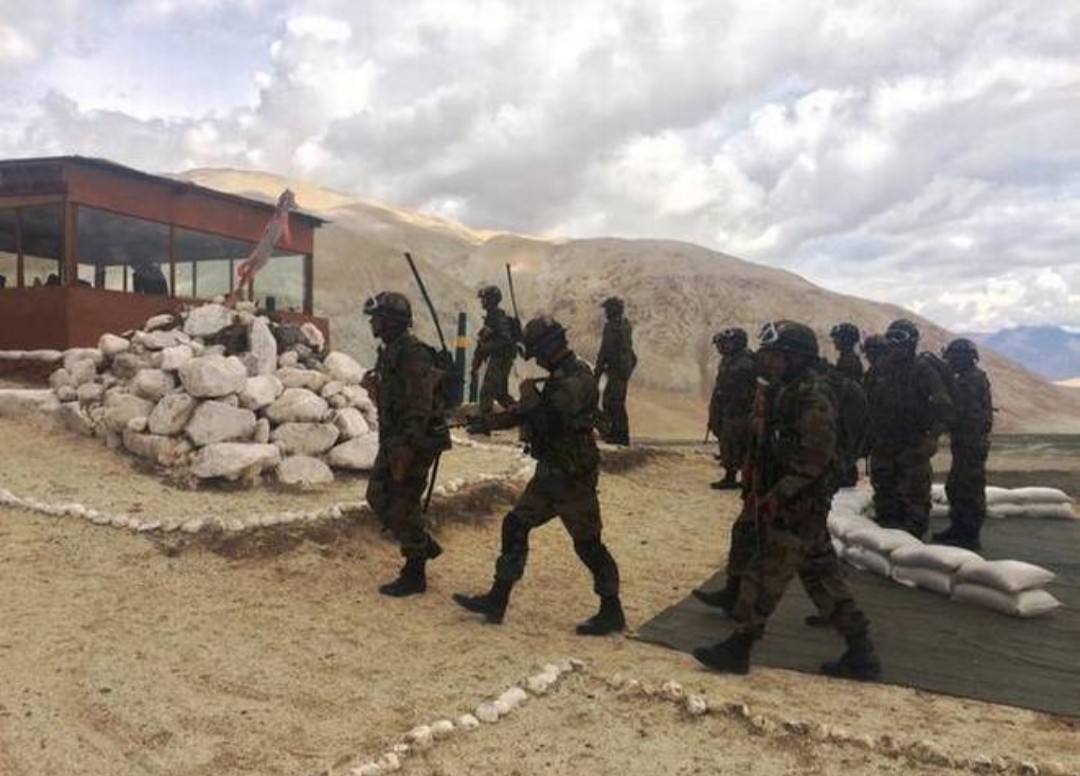Indian and Chinese officers meet at Moldo border personnel meeting point, opposite Chushul in eastern Ladakh.
India and China held crucial talks between senior military commanders on Saturday in an effort to ease the tension along the border.
Lt. Gen. Harinder Singh, Commander of the Leh-based 14 Corps, led the Indian delegation to the Chinese border personnel meeting point at Moldo, opposite Chushul in eastern Ladakh. The Chinese side was represented by Maj. Gen. Liu Lin, Commander of the South Xinjiang military region.
Sources said the difference in ranks did not denote a difference in seniority, and it was because of China’s military structure being different from India’s. The talks were scheduled to begin early but were delayed and started around 11.30 a.m. and went on for several hours, sources said.
No breakthrough
While the outcome was not known, the talks were not believed to lead to any major breakthrough but only set the stage for further talks.
India’s major demand is the restoration of status quo before May, as beginning early May Chinese troops moved in large numbers into Indian territory at Pangong Tso, Galwan and Gogra in eastern Ladakh, and de-induction of troops by China.
Another concern is Chinese build-up at Finger 4 of Pangong Tso up to where India has always held territory, while it claims areas as far as Finger 8. In addition, China moved armour and artillery close to the Line of Actual Control on its side, a measure which is against the boundary agreements.
As a procedure, at the end of the talks, the two sides finalise the minutes of the meeting. Once the delegation returns, the Corps Commander would give an update to the Northern Army Commander and the Army chief, sources explained.
Before the talks began, the Army issued an advisory to the media that both sides remained engaged through established military and diplomatic channels “to address the current situation in the India-China border areas” and speculation would not be helpful. “At this stage, therefore, any speculative and unsubstantiated reporting about these engagements would not be helpful and the media is advised to refrain from such reporting,” it said.
Since the tension began, both Armies have held dialogues at various levels, including three meetings at the level of Major-General. Military experts had already stated that the military talks would not lead to a solution but would set the ground for diplomatic talks to end the impasse.
On Friday, Naveen Srivastava, Joint Secretary (East Asia), Ministry of External Affairs, held a video-conference with Wu Jianghao, Director-General of the Asia Department at the Chinese Ministry of Foreign Affairs. China said both sides agreed to “implement the consensus that two countries do not constitute a threat to each other” and “do not let differences rise into disputes”.
Separately, in the midst of the tension, China has appointed a new commander to oversee the People’s Liberation Army’s Ground Forces along the India border. On June 1, it was announced that Lt. Gen. Xu Qiling was appointed as the new commander of the PLA Western Theater Command Ground Force. He will report to General Zhao Zongqi, commander of China’s Western Theater Command.
With inputs from The Hindu

